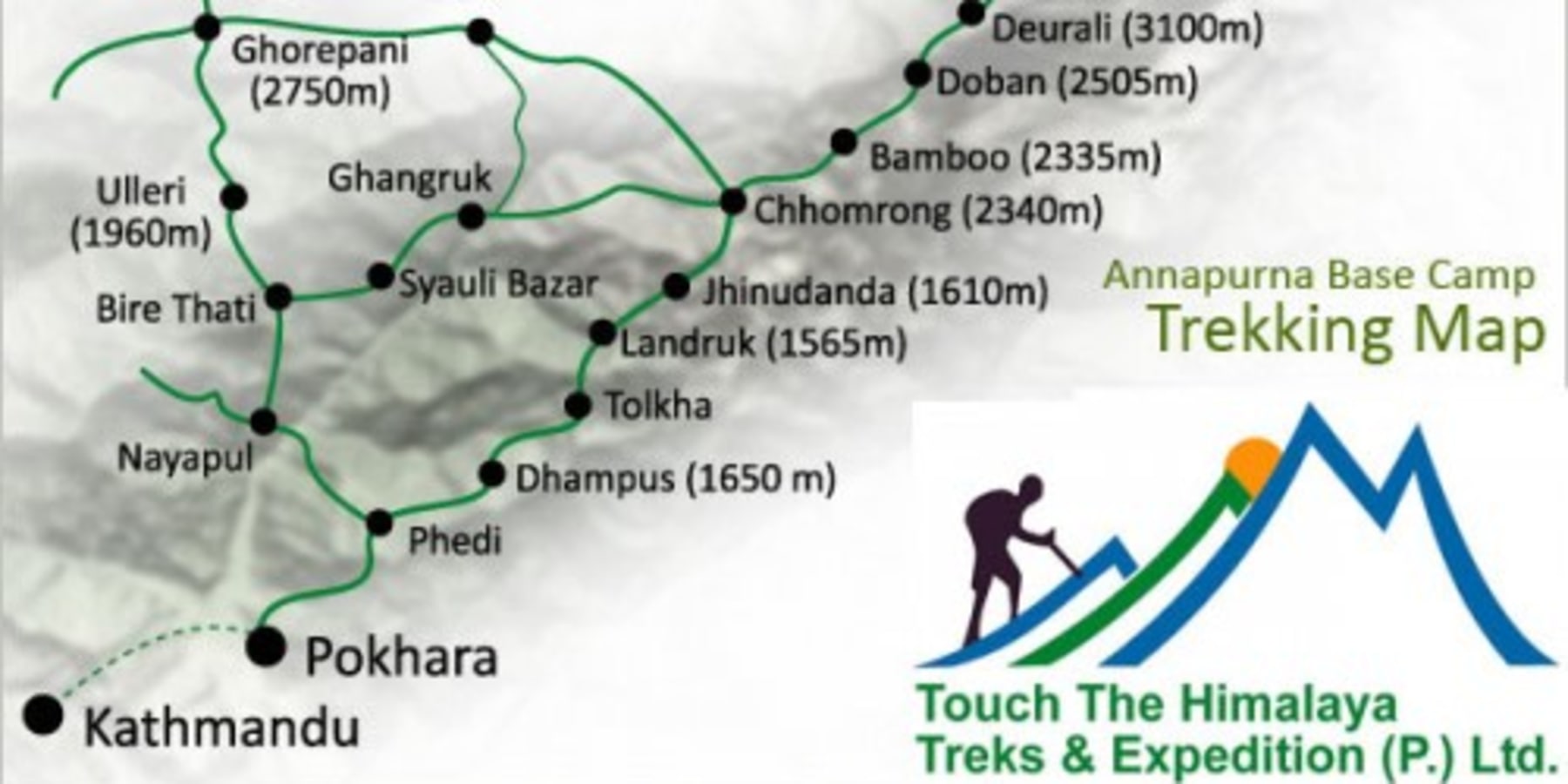
Dear friends,
Welcome To Nepal,
If someone travelling to Nepal and doing some trekking around Mountain, I hope following information may help you to organize your trip the way you are looking for.
The first thing to consider is whether you want a guide and porters. If you want to go cheap, then carry your own gear and get a map. Trekking maps are abundant in Kathmandu and cost from $3-5 (not so easy to find here in your country). Most treks take standard routes. Several websites that offer trekking services outline the trekking routes and you can easily follow their suggested routes. The routes are designed so that you don’t go up more than about 400 m elevation per day as you acclimate. Some of the days are short (3 hr hiking) but if you’re not acclimated it is wise not to go up too fast. If you get altitude sickness, your trip is over. Also, there’s no reason to hurry. Slow down and enjoy the scenery.
The villages along the way all have teahouses that offer sleeping and eating accommodations. Villages that are part of the standard trekking route and stop are well equipped with several tea houses other villages may only have 1 or 2. During the peak season (Oct – Nov.), a room costs about 300-400 rupees per person per night and 200 rupees/night in the off-season (exchange rate are more or less ~95:1 ). Most rooms are doubles, some triples. The teahouses can fill up during peak season and for the same price you can sleep on the floor in the dining room. The benefits of a guide is that they have connections and can call ahead and get a room (if there is cell phone service). It is pretty quiet in September to December and March to May of the years.. Several groups hiking in around Christmas time Lots of places close up after December.
You are expected to eat at the teahouse where you stay. Most teahouses offer the same menu so it doesn’t really matter. Breakfast can be eggs with bread (Tibetan bread, chipati or really dry white toast), oatmeal, yogurt with fruit. Breakfast will typically cost you about 400-500 rupees. Prices go up the further you are from valley to as everything is carried in by porters and yak. Lunch and dinner are the same menu. High in carbohydrates (rice, spaghetti, noodles, french fries) with a little meat and veggies. Some places had yak steaks – a nice alternative to the carbos. Dinners will cost about 700-1000 rupees.
If you decide to hire a guide and porters, Better ! there are over 1000 trekking agencies in Kathmandu as well as several international agencies and some individuals, It is highly competitive and you can barter over the price or you can randomly walk into a couple of agencies.Touch The Himalaya Treks and Expedition is one among them, which is located in the center of town more accessable location. The agency should again give you two options: 1) you pay in advance for food, lodging, guide and porters, or 2 is called package trip) you pay in advance for the guide and porters and pay for your own food and lodging (is called only hiring trip) . The guides and porters have a set salary that includes their food and lodging. I’m not sure what the guide and porters actually get paid, they have several rules of trekking agencies but the agency will quote you a price that includes their profit – this is a negotiating point.
You also need to pay the airfare for the guide and porters to get to some remote location (or wherever you are going) but Nepali prices are much cheaper than for foreigners. Porters typically are hired locally. The agency also will arrange for your travel to wherever.
You need to bring enough rupees with you to cover all your basic expenses while trekking. The advantage of paying for the entire trip in advance is that the guide will responsible for paying for everything (except for extra drinks, snacks). . All you have to o do was hike and your guide take care of everything else – pick out the tea house where you would stay, got your rooms, paid the bill at the end of your stay, etc. The downside to this option is that for some reason you cut your trip short (bad weather, health issues), you will not be reimbursed.
Other things to consider:
Boiled and bottled water is expensive, especially in the higher elevation villages (~350 rs/liter). Bring a water filter.
You need a government issued TIMS card to go trekking ($20) that has to be purchased in Kathmandu. Bring 2 passport size photos or you will need to get photos in Kathmandu. The trekking agency will get these for you.
You also need a National Park and conservation area permit These can be purchased when you enter the park or conservation area, but it’s easier to get it in advance in Kathmandu. Again, if you hire a guide, the agency will get this for you.
Happy Trekking!

